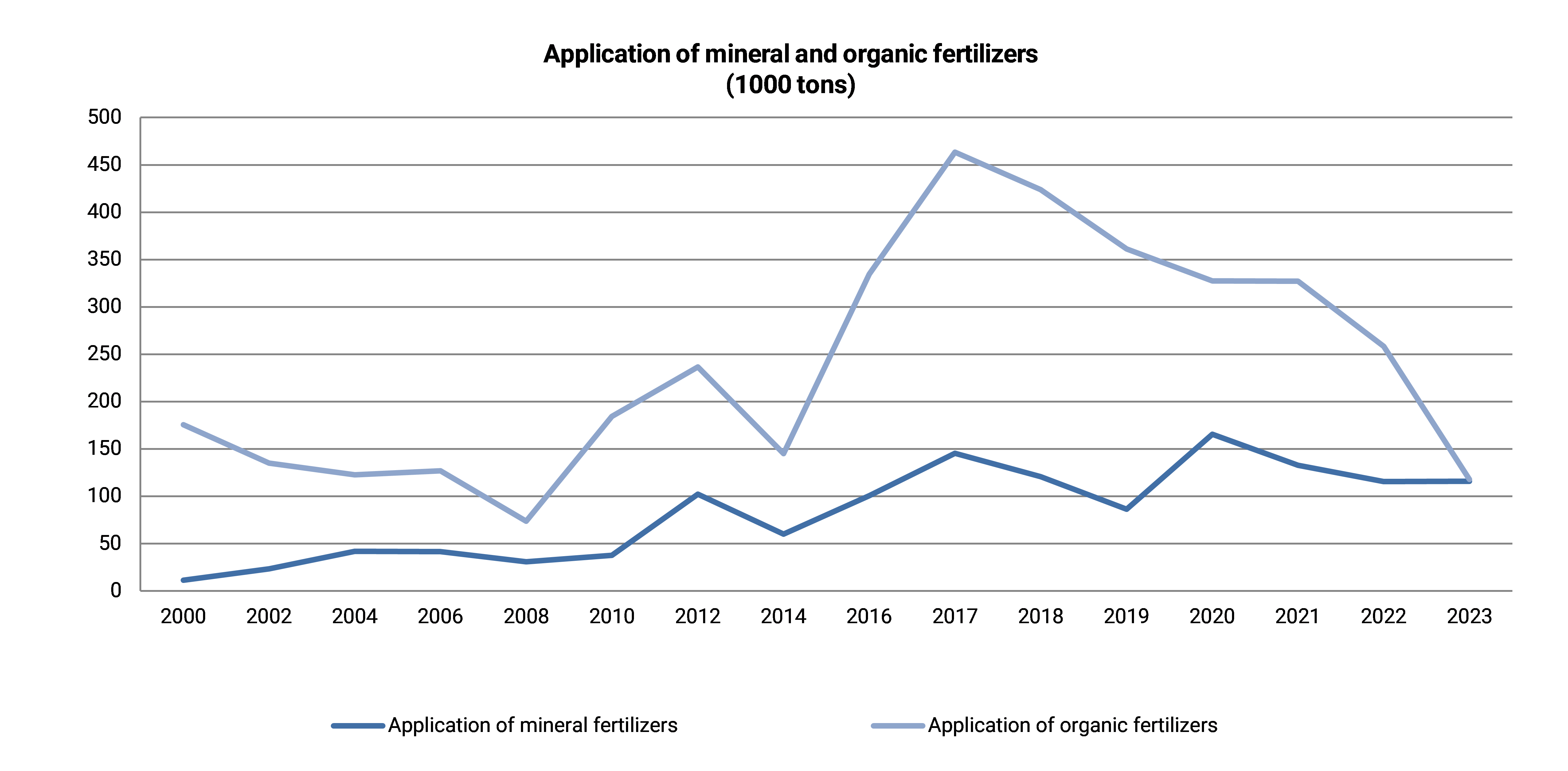Brief description:
The indicator reflects the amount of applied mineral and organic fertilizers per unit area of cultivated land and perennial plantings. When using mineral and organic fertilizers to increase agricultural productivity, environmental hazards increase, for example, the risk of contamination of water and soil, and there is a negative impact on other components of the environment, including disruption of the natural balance of soil microflora. The high content of nitrates and nitrites in drinking water is a danger to human health.
The information is given on mineral and organic fertilizers applied for crops, for crops of both open and protected soil, as well as for perennial plantings (orchards, berry fields, vineyards, mulberries), natural hayfields and pastures.
Methodology:
The indicator is formed in accordance with the "Methodology for the formation of environmental statistics indicators" approved by Order No. 223 of the Acting Chairman of the Statistics Committee of the Ministry of National Economy of the Republic of Kazakhstan dated December 25, 2015.
The responsible state body for the formation of data on the introduction of mineral and organic fertilizers is the Bureau of National Statistics of the Agency for Strategic Planning and Reforms of the Republic of Kazakhstan. The information is generated once a year based on the results of national statistical observations according to the forms: "On the harvesting of agricultural crops" (form index - 29-cx, annual) and "On the harvesting of agricultural crops in small peasant or farm households and households of the population" (form index – A-005, annual).
